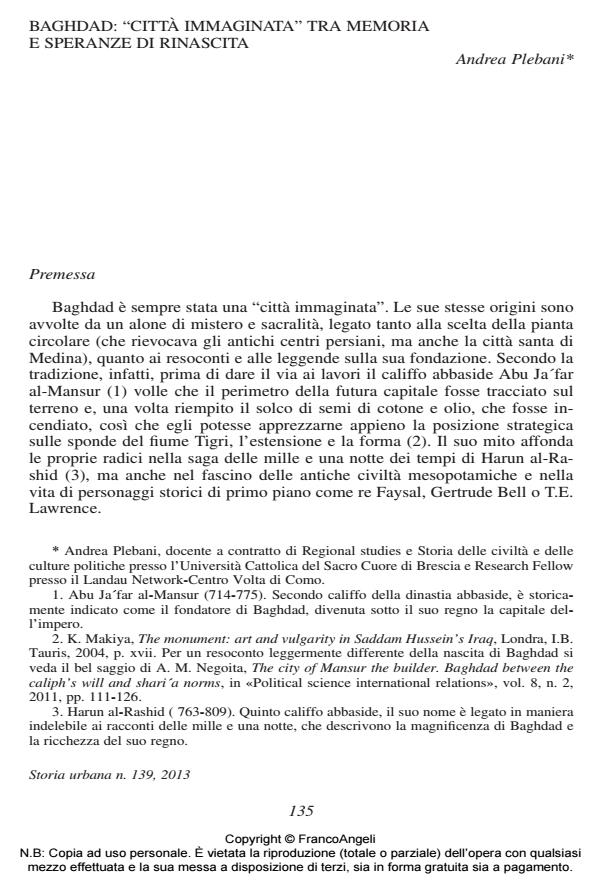Baghdad: An "Imagined City" Between Memory and Hope of Rebirth
Journal title STORIA URBANA
Author/s Andrea Plebani
Publishing Year 2013 Issue 2013/139
Language Italian Pages 24 P. 135-158 File size 1960 KB
DOI 10.3280/SU2013-139005
DOI is like a bar code for intellectual property: to have more infomation
click here
Below, you can see the article first page
If you want to buy this article in PDF format, you can do it, following the instructions to buy download credits

FrancoAngeli is member of Publishers International Linking Association, Inc (PILA), a not-for-profit association which run the CrossRef service enabling links to and from online scholarly content.
This essay highlights how Iraqi ruling elites created monuments and memorial places that significantly shaped Baghdad’s urban spaces, and propagated concepts and ideas that were functional to the political agenda of the government. In particular, the first part of the essay focusses on the era of ‘Abd al-Karim Qassim (through an analysis of the renowned moument realized by Jawad Salim) and of Saddam Hussein. The second part of the essay describes the deep impact that the deployment of international troops after 2003 and the subsequent civil war left onto the urban landscape. In particular, the essay focusses on the level of destruction and transformation brough upon by the conflict, with the formation of a highly securitized central zone, and the result of processes of forced homogenization along sectarian lines.
Keywords: Iraq Baghdad Politics of Memory Baath
Andrea Plebani, Baghdad: "città immaginata" tra memoria e speranze di rinascita in "STORIA URBANA " 139/2013, pp 135-158, DOI: 10.3280/SU2013-139005